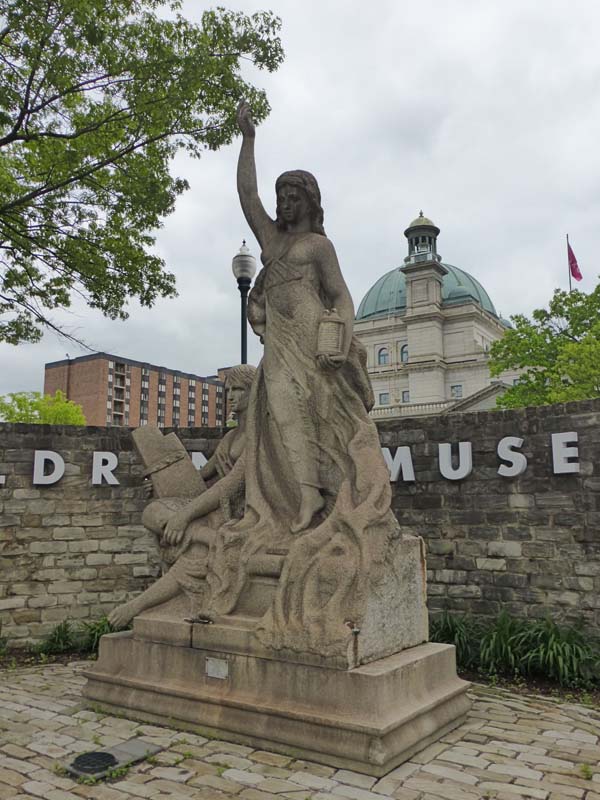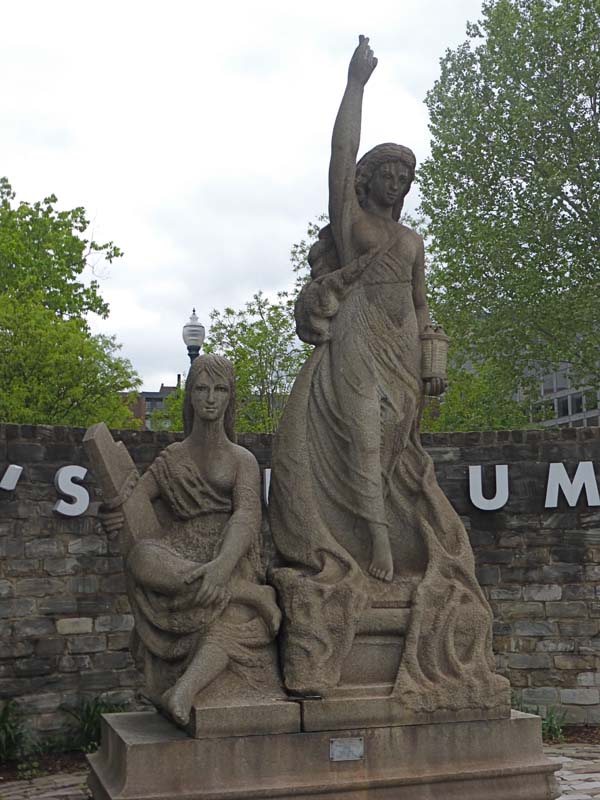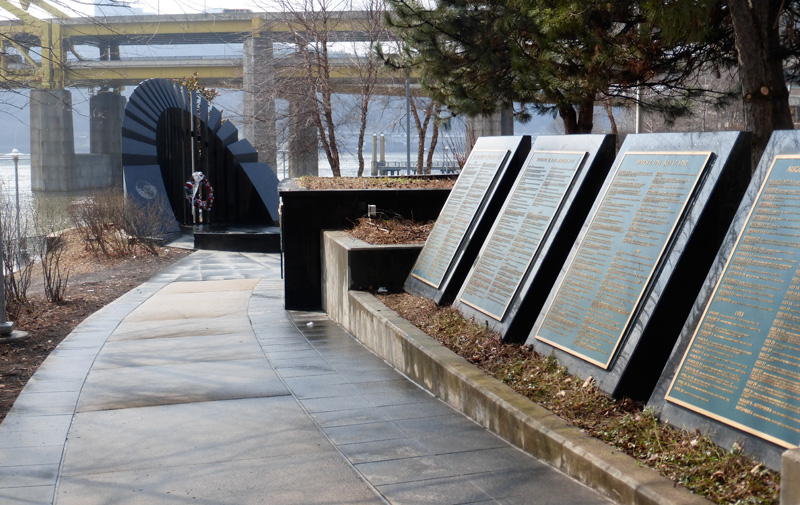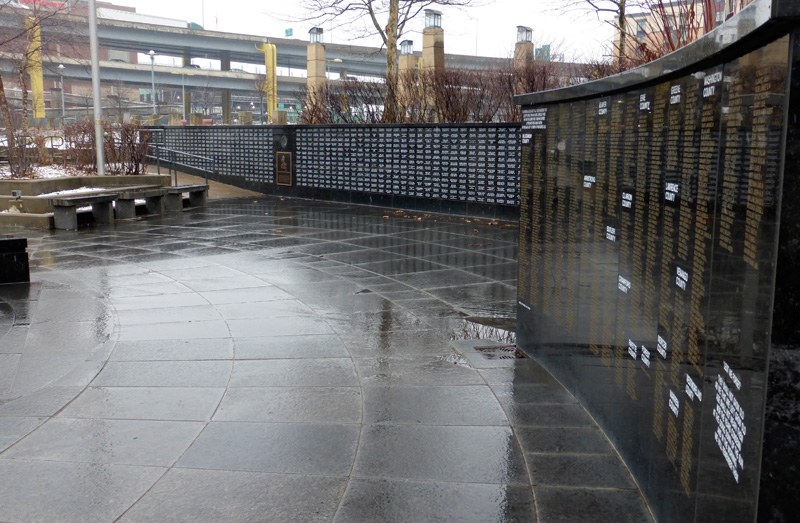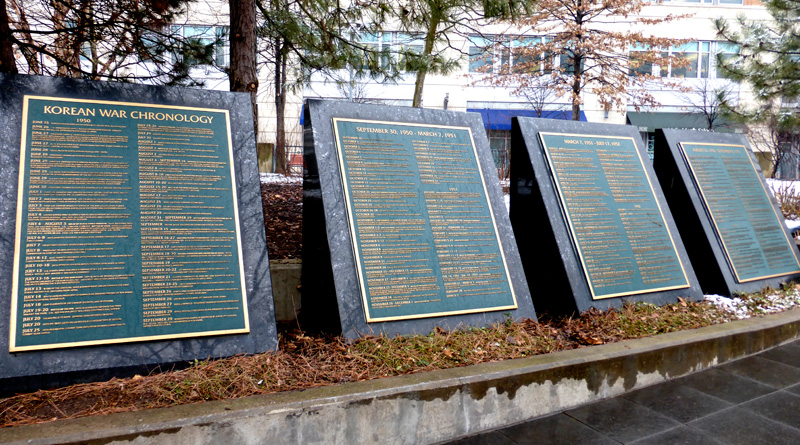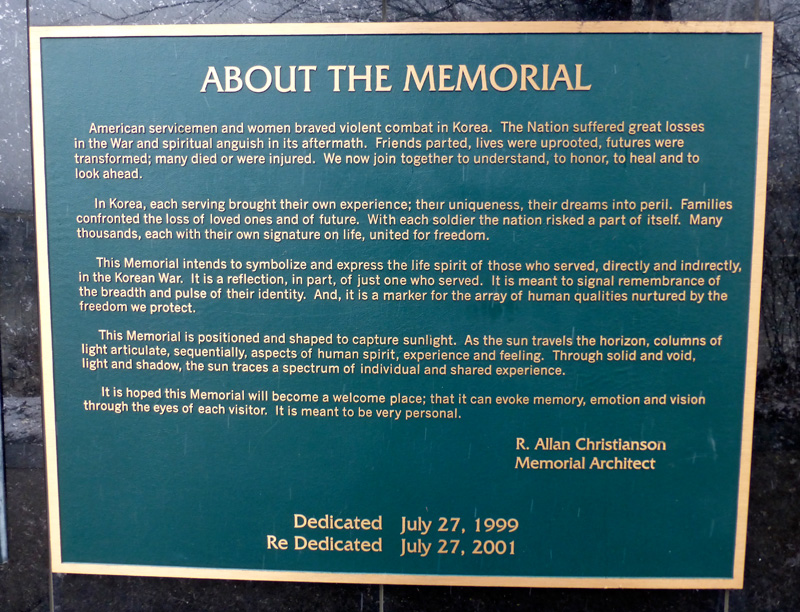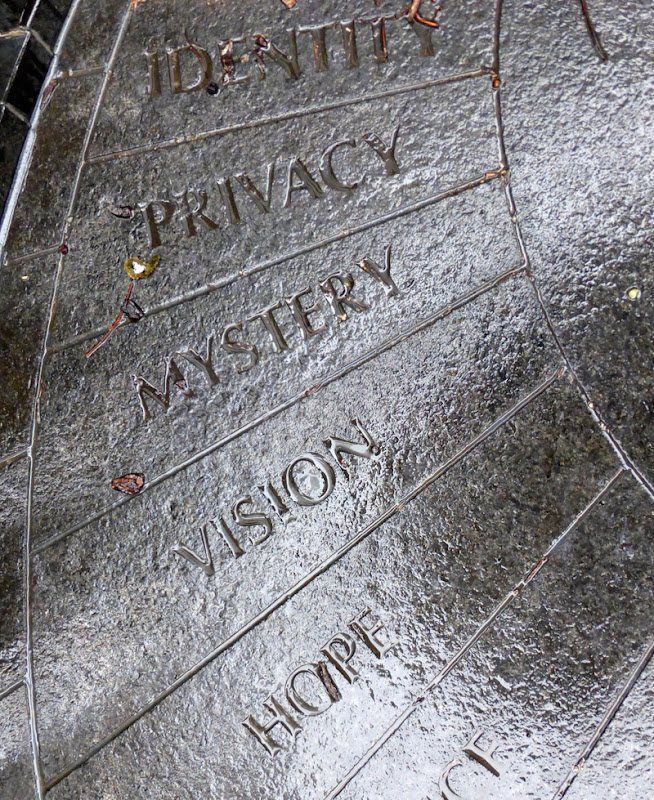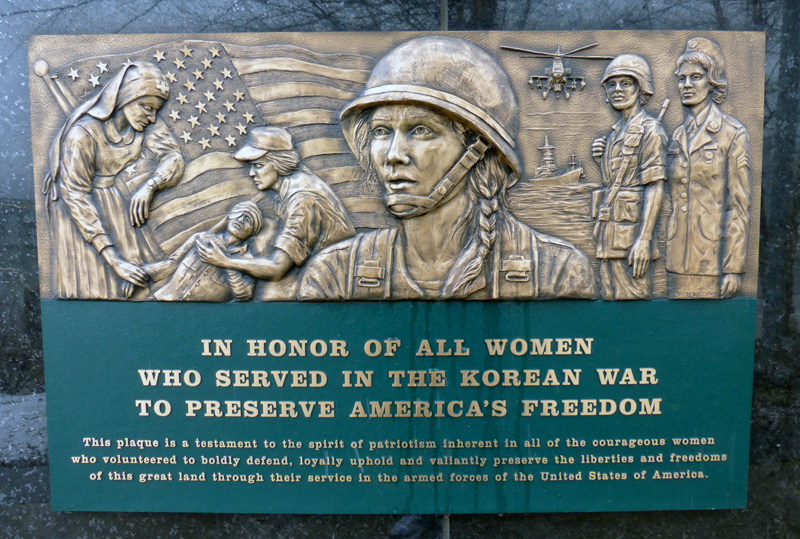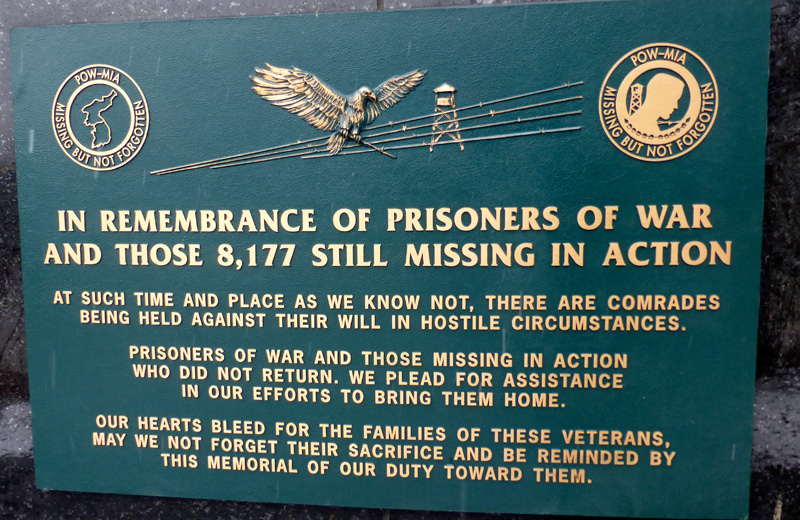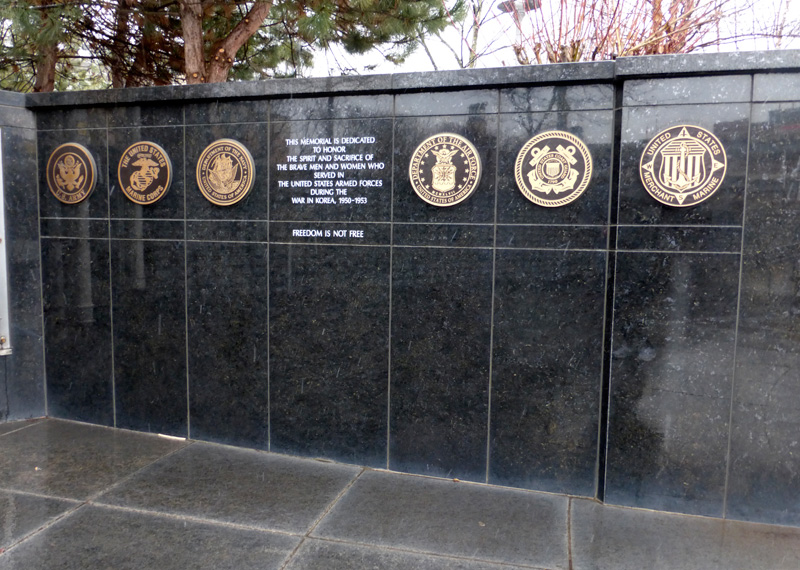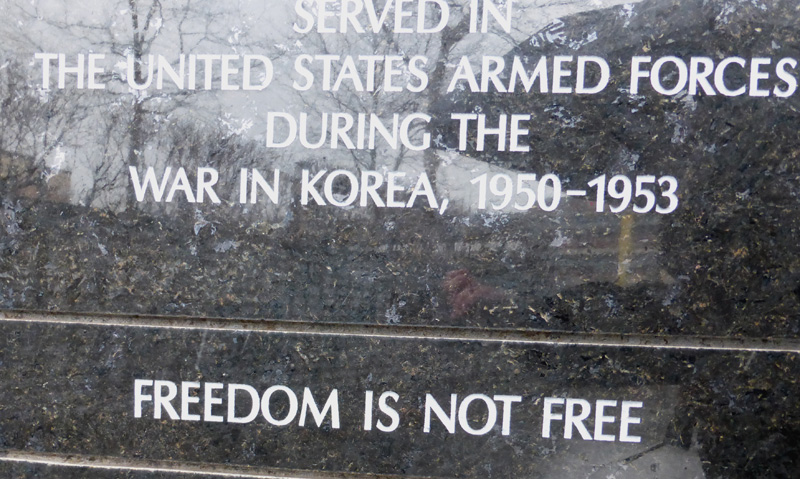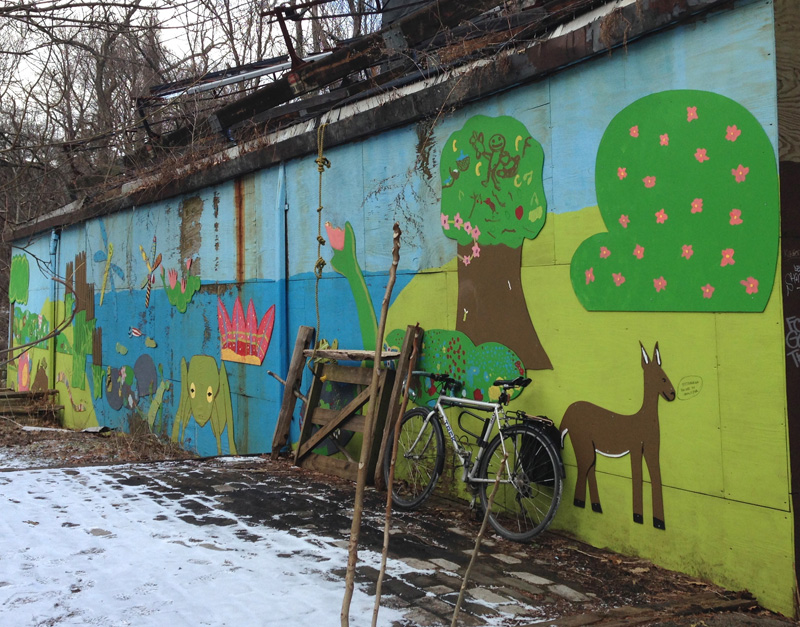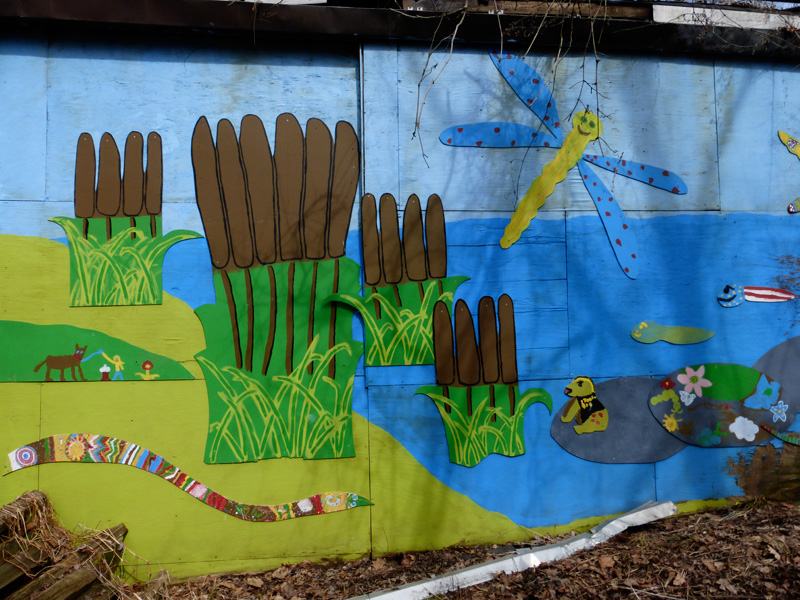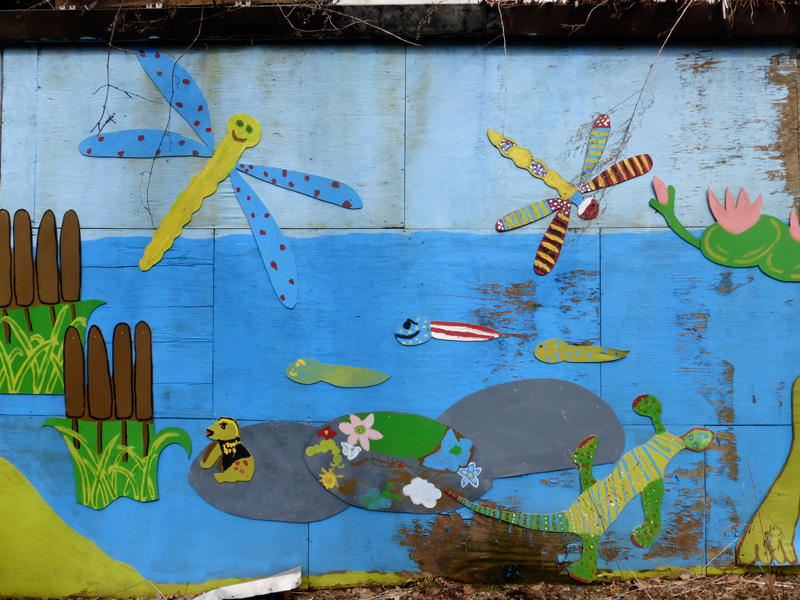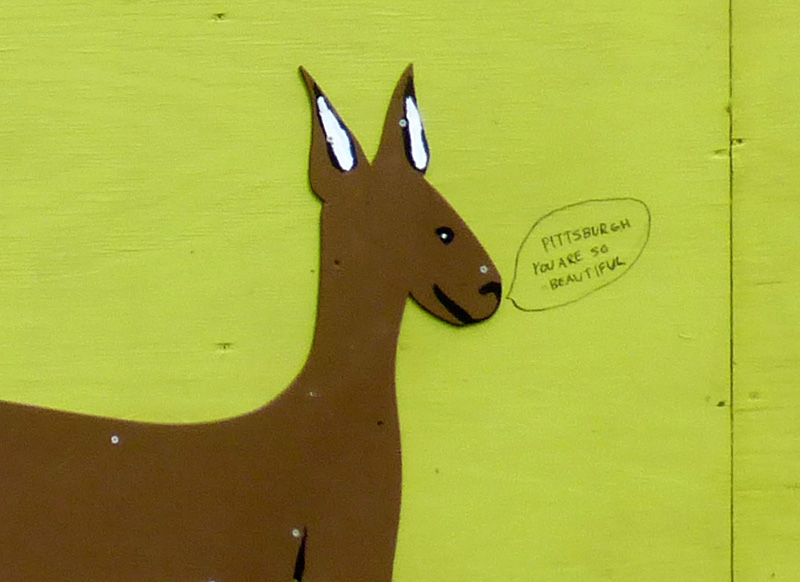About Pgh Murals
Spreadsheet of Pittsburgh Public Art and blog archives
Map of Pittsburgh Public Art
What would Pittsburgh’s landscapes and communities look like if they were part of a healthy, functioning ecosystem?
That was the theme and the title for this series of five murals. Each panel offers an answer to that question. It was the idea of high school student Lucy Newman, of Pittsburgh Obama, who saw the five blank garage doors while she was working at Sylvania Natives, a local nursery. The owner of the nursery had suggested she create her own internship project, and she came up with the plan to do environmental themed murals on those doors.
Kathy McGregor, who owns the nursery, worked together with Lucy and others to develop the question that inspired the murals. As they were potting up plants, Lucy and Kathy would spend hours discussing how to go about painting the murals in a way that is consistent with her business. (An evironmentally responsible nursery, Sylvania Natives grows only plants native to this area.) When Lucy asked her art teacher, Donna Hetrick, for help on paint colors and types, Ms. Hetrick jumped right into the project.
The project grew into a community effort called the Plants and Paints Summer Workshop. Lucy and nine other students from various Pittsburgh high schools participated in the project. During the workshop, the student artists talked with people from Pittsburgh Parks Conservancy, Tree Pittsburgh, Clean Rivers Campaign, Sierra Club and others, to learn more about environmental issues. They split into five groups, each in charge of designing and executing a mural for one of the doors. Several local artists - Silvija Singh, Karen Coyne, Clayton Merrell, and Maria Harrington - helped the students with their designs and gave advice on painting techniques.

Mother Knows Best by Heather Harrington, Jordan Schultz–Mcardle, and Lainey Newman.
Artist’s statement for this panel:
In this piece we mainly want it to be thought provoking. We don’t want to tell you if we answered the question or not. Its (sic) up to you (the viewer). Same thing with what we were trying to convey, its (sic) what you want to see, not what we want you to see. This is not some lame excuse to not give you a statement, I promise. However I will give you some of our input. We decided to have the color purple coming out of the silhouettes (sic) mouth because it seemed to convey a better message. Then the purple leads into a green, as you can see the green turns into a milkweed plant. There on the plant is a caterpillar monarch and it leads into the next mural.

Metamorphosis by Lucy Newman and Lainey Newman.
Artist’s statement for this panel:
Monarch butterflies and milkweed plants have evolved together, and now neither can survive without help from the other. Interdependence is common to all forms of life, but the beautiful monarch has become symbolic of such relationships. As manmade infrastructure and introduced species begins to encroach upon natural habitats, the entire ecosystem suffers. In this project, we attempted to envision what our city would look like if it were part of a healthy, functioning ecosystem. Perhaps one day, we will be able to look down from Mount Washington through a thriving forest, at a city composed entirely of green infrastructure. We are not there yet, though we are going through a metamorphosis.

Vision, by Zoe Merrell and Natalie Kandra.
Artist’s statement for this panel:
This mural shows how a street in Pittsburgh would look different if we took steps such as building rain gardens, installing rain barrels and permeable pavement, capturing wind and solar energy, constructing green roofs, making streets bike and pedestrian–friendly, and planting a diversity of native plants and trees. Each of these actions is just a small part of a larger movement to change the way we interact with the earth. If individuals and communities decide to move towards a sustainable model of living rather than continuing to disrupt and destroy the environment, this vision can become a reality.

Untitled, by Clair Holthaus and Kay Hughes.
Artist’s statement for this panel:
Our piece depicts a Pittsburgh fueled by clean and efficient energy, such as solar, wind and hydro power. It also pictures a problem with our energy resources – how to efficiently store large amounts of energy. The trees bordering the city show Pittsburgh heading towards a greener and environmentally friendly future.

Planting a Community, by Myiya Peters and Merryn Spence
Artist’s statement for this panel:
Having a healthy and functioning ecosystem involves everyone working together. Our painting shows that anyone and everyone can take part in helping the environment. It’s a simple yet profound experience. The message we are trying to convey through our mural is that it takes a community to act upon an issue and create change. Through the four colorful people planting the tree, were (sic) attempting to show that anyone from any place can help to make a community more environmentally friendly. We attempted to answer the question What would Pittsburgh’s landscapes and communities look like if they were part of a healthy, functioning ecosystem?,
by conveying Pittsburgh as a community with more plants and trees, clean air, and people of different backgrounds contributing to creating this Eco–friendly environment. In order to answer the overarching question, we used collaboration, our creative thought process, and paints!

While not a Sprout Fund Public Art mural, the project was sponsored in part by the Sprout Fund’s Hive Fund for Connected Learning. Hive Pittsburgh is a program of the Sprout Fund that supports connected learning projects that help youth, including tweens, teens and young adults, prepare for college, the workforce, and civic participation. Other sponsors included the Nine Mile Run Watershed Association, Sylvania Natives, the Artist and Craftsman Supply Company, and the East End Food Co–op.






